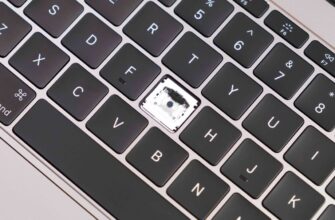Why Password Protection is Non-Negotiable for Your Money
In today’s digital world, your funds are only as secure as your passwords. For beginners, understanding password protection is the cornerstone of financial safety. Weak or reused passwords make bank accounts, investment platforms, and payment apps vulnerable to hackers. A single breach can drain life savings in minutes. This guide simplifies password security so you can confidently shield your money from cyber threats.
Building Fort Knox Passwords: Your Step-by-Step Blueprint
Strong passwords are your primary defense. Follow these rules:
- Length is king: Use 12+ characters – longer is stronger.
- Mix it up: Combine uppercase (A-Z), lowercase (a-z), numbers (0-9), and symbols (!@#).
- No personal info: Avoid names, birthdays, or common words like “password123”.
- Uniqueness matters: Never reuse passwords across accounts.
- Passphrase power: Create memorable phrases like “BlueCoffee$MugRides42!”
Example: Instead of “bank567”, use “Mount@inDew!2024Secure$”.
Multi-Factor Authentication (MFA): Your Password’s Bodyguard
MFA adds an extra verification layer beyond passwords. Even if hackers steal your password, they can’t access accounts without a second “factor”. Enable MFA everywhere possible:
- How it works: After entering your password, you’ll verify via text code, authenticator app (like Google Authenticator), or biometrics (fingerprint/face ID).
- Priority targets: Banking apps, PayPal, crypto exchanges, and email accounts tied to finances.
- Setup tip: Use authenticator apps instead of SMS for higher security.
Password Management: Organize Without Compromise
Juggling dozens of complex passwords is overwhelming. Password managers solve this:
- How they work: Apps like Bitwarden or 1Password store passwords in an encrypted vault. You only remember one master password.
- Benefits: Auto-generate strong passwords, auto-fill logins, and sync across devices securely.
- Security first: Choose managers with zero-knowledge encryption (they can’t see your data).
Avoid these critical mistakes:
- Writing passwords on physical notes or unencrypted files
- Sharing passwords via email/text
- Using public Wi-Fi for financial logins
Emergency Response: When Passwords Fail
If you suspect a breach:
- Immediately change the compromised password and enable MFA if inactive.
- Scan devices for malware using tools like Malwarebytes.
- Contact your bank/financial provider to freeze suspicious transactions.
- Update all similar passwords used elsewhere.
Password Protection FAQ for Beginners
Q: How often should I change passwords?
A: Every 3-6 months for high-risk accounts (banks, email). Use a password manager to track schedules.
Q: Are password managers really safe?
A> Yes – reputable ones use military-grade encryption. Your master password is never stored on their servers, making breaches extremely unlikely.
Q: What if I forget my master password?
A> Most managers don’t store it, so recovery is impossible. Use a memorable passphrase and store a physical backup in a safe.
Q: Should I use biometrics (fingerprint/face ID) instead?
A> Biometrics are convenient but pair them with passwords or MFA. They can be bypassed if your device is stolen.
Q: How do I check if my password was leaked?
A> Visit HaveIBeenPwned.com to scan for exposures. Change compromised passwords immediately.
Q: Can hackers guess long passwords?
A> A 12-character complex password would take hackers 3,000 years to crack – length and complexity are crucial.








